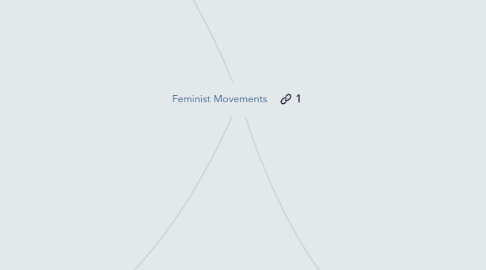
1. Kinds of Violence Against Women
1.1. Emotional
1.1.1. Child Marriage
1.1.2. Domestic Violence
1.1.3. Sex Trafficking
1.2. Physical
1.2.1. Femicide
1.2.2. Acid Throwing
1.2.3. Female Genital Mutilation/Cutting
1.3. Economic
1.3.1. Tampon Tax
1.3.2. Unequal Pay
1.4. Sexual
1.4.1. Rape
1.4.2. Sexual Assault
2. Counter Movements
2.1. Tradition
2.1.1. Massai Women (Kenya)
2.1.1.1. A group of women in Kenya who disagree with making FGM illegal because it is an attack on their traditions and culture and believe western feminism has no business telling them to stop practicing their traditions.
2.2. Religion
2.2.1. Presbyterian Church of America
2.2.1.1. A subsection of the Presbyterian Church which split from the PCUSA in 1973 for the main reason of wanting to stay evangelical, most notably in following the Old Testament practice of excluding women from church leadership.
2.3. Culture
2.3.1. Women Against Feminism (USA)
2.3.1.1. A movement that was began on Tumblr in 2013 as a reaction to the growing feminist movement. It works as a space for women to advocate against what they see as oppressive nature of feminism against women and men.
3. Movements by Region
3.1. Western Feminism
3.1.1. Case Study: Me Too Movement
3.1.1.1. Grassroots organization founded in 2006 originally to help Black women and girls in the USA find healing from sexual assault. Has now been used to bring awareness to the prevalence of rape and sexual assault.
3.2. Central and South American Feminism
3.2.1. Case Study: Brazil: Think Olga and #primeiroassedio
3.2.1.1. Independent Journalism NGO founded by Juliana de Faria in 2013 with the purpose of sharing truthful, intersectional, and transparent information about, for, and by women. Juliana de Faria also sparked #primeiroassedio (First Harassment) on Twitter to bring awareness to the sexual harassment endured by Brazilian and Mexican women from a very young age.
3.3. Southeast Asian Feminism
3.3.1. Case Study: Vietnam: Actionaid Vietnam
3.3.1.1. A subsection of the the international Actionaid movement specifically concerned with educating, training, and empowering Vietnamese women and girls along with educating Vietnamese men and boys about women's rights.
3.4. Chinese Feminism
3.4.1. Case Study: China: Women Awakening Network
3.4.1.1. Awareness group founded in 2004 by Li Sipan that trains reporters and media outlets on how to report on gender issues. Most recently they helped the Feminist Five (five young Chinese women and activists who were detained for handing out stickers about sexual assault).
3.5. Central African Feminism
3.5.1. Case Study: Cameroon: Women for Change
3.5.1.1. Founded in 2009 to bring attention to and fight gender based violence and sexual violence against women along with educating and empowering young girls and promoting young peoples reproductive rights.
3.6. Southern African Feminism
3.6.1. Case Study: The Eastern African Sub-regional Support Initiative for the Advancement of Women (EASSI)
3.6.1.1. Founded in 1996 to aid women in Southeast Africa by partnering with national NGOs to create local projects focusing on empowering women economically, politically, and socially.
3.7. North African Feminism
3.7.1. Case Study: Morocco: Woman Choufouch
3.7.1.1. Group formed by young women in Morocco to bring attention to sexual harassment and gender based violence through a 'slut-walk'.
3.8. Middle Eastern Feminism
3.8.1. Case Study: Yemen: Women Journalists Without Chains
3.8.1.1. Founded 2005 in by activist Tawakkol Karman to advocate for women's rights to promote freedom of expression
3.9. Indian Feminism
3.9.1. Case Study: Feminism In India (FII)
3.9.1.1. An online magazine used to amplify and publicizes stories by and for marginalized people, specifically women. They are currently trying to become an online resource center for marginalized groups within India.

